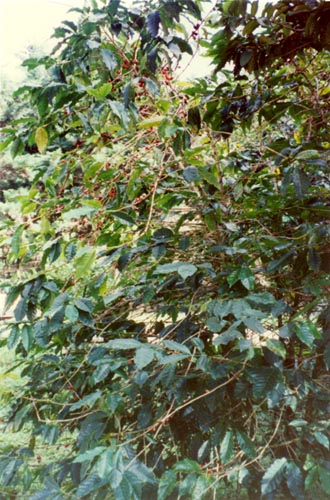| Obverse Design | The legend "FINCA DE CAFE" (Plantation of Coffee) curves along the top. The name "OSORIO" goes across the middle. Above and below "OSORIO" are five-point stars, both of them pointing down. There is a small hole, as issued, above the "S" in "OSORIO". There is a circle of beads close to the edge. It has a smooth plain raised edge. | ||||
| Reverse Design | The legend "VALE POR" (Good For) curves along the top. The legend "½ LATA" goes across the middle. Above and below the denomination are five-point stars, both of them pointing up but slightly to the right. There is a small hole, as issued, above the "T" in "LATA". There is a circle of beads close to the edge. It has a smooth plain raised edge. | ||||
| Metal | Brass. | Weight | TBD. | Size and Shape | Round, 25 mm in diameter. |
| Dates Issued | 1922. Used from 1922 to 1940. | ||||
| Issurer | OSORIO FINCA DE CAFE (OSORIO Coffee Plantation). | ||||
| Mintage | Unknown. | ||||
| Rarity | Very Common. | Manufacturer | Unknown, made in Germany. | Other Catalog Numbers | Asociación Numismático's F-217, Conte Porras page #107, #111 and #112, Henkle's Locality Unknown #32, Plumer page #4, Rulau's Chq 32 and Schimmel #50. |
| Varieties | All 1/2 Lata specimens known to me come with the small hole in the same location. Perhaps the hole was added to help distinguish the 1/2 Lata tokens from the slightly larger 1 Lata tokens. But then again, some of the 1 Lata tokens have holes as well. | ||||
| Function | Coffee plantation token. The token would be given a worker for filling a half of a "lata" with raw green coffee beans. A "lata" was a metal box about one cubic foot in size. On payday the tokens would be turned in for money. In many cases the tokens could also be redeemed at the plantation general store. | ||||
| Population Count |
Forty-five specimens of this token in collector hands are known to me.
Recent sales include:
|
||||
| Notes |
While many fincas in Panama have given names, others are called by the name of the family that owns them. Such was the case with Finca 337 - it was named Finca Osorio for the last name of the family that owned the largest share of the finca. According to the Osorio family, operations on the finca began in earnest in 1922. The Finca Osorio had a wet process "beneficio" and coffee dryers. The Finca Osorio also had milk cattle. The little Osorio boys used to deliver milk on their way to school in Boquete. David Osorio died June 13, 1925 in David, Panama. His share in the coffee plantation was inherited by his wife Eveline and surviving children Isaac and Ester. These Osorio family members owned the largest share of the finca until 1962. Finca Osorio today is quite large, encompassing almost 2500 acres (998 hectares). It was purchased by Arnulfo Arias (several times President of Panama, and originator of the 1941 Panama bills), who also owned several other fincas. Today it continues to be owned by members of the Arias family under the corporation name Arkapal, S.A. |
||||

Photo by David S. Plowman, 1993. All Rights Reserved.
 David Osorio (shown in the photo) was born May 19, 1865 in Curacao, Netherlands Antilles.
His parents
were Isaac Osorio and Esther Delvalle. He married Eveline Correa, also from
Curacao, in 1892. By the year 1900 they had immigrated to Panama. In 1915,
the land records show that "Finca 337" in the Boquete region near Horqueta
was owned 50% by David Osorio, 25% by Moisés Cardoze and 25% by Carlos Mendoza.
The Osorio and Cardoze families were related families of Jewish descent.
Moisés Cardoze was born December 18, 1860 in St. Thomas, Danish Virgin Islands.
He and his wife Grace imigrated to Panama in 1895. He served as a Rabbi
for Kol Shearith Israel. He was also a businessman and owned several properties
in Colon and Panama City.
David Osorio (shown in the photo) was born May 19, 1865 in Curacao, Netherlands Antilles.
His parents
were Isaac Osorio and Esther Delvalle. He married Eveline Correa, also from
Curacao, in 1892. By the year 1900 they had immigrated to Panama. In 1915,
the land records show that "Finca 337" in the Boquete region near Horqueta
was owned 50% by David Osorio, 25% by Moisés Cardoze and 25% by Carlos Mendoza.
The Osorio and Cardoze families were related families of Jewish descent.
Moisés Cardoze was born December 18, 1860 in St. Thomas, Danish Virgin Islands.
He and his wife Grace imigrated to Panama in 1895. He served as a Rabbi
for Kol Shearith Israel. He was also a businessman and owned several properties
in Colon and Panama City.